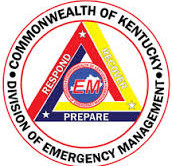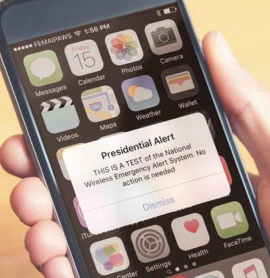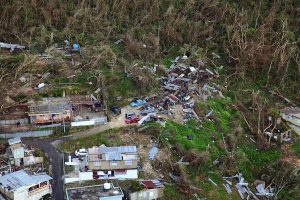 CDC today confirmed another infection with Coronavirus Disease (COVID-19) in the United States. The patient is among a group of people under a federal quarantine order at JBSA-Lackland in Texas because of their recent return to the U.S. on a State Department-chartered flight that arrived on February 7, 2020.
CDC today confirmed another infection with Coronavirus Disease (COVID-19) in the United States. The patient is among a group of people under a federal quarantine order at JBSA-Lackland in Texas because of their recent return to the U.S. on a State Department-chartered flight that arrived on February 7, 2020.
As the disease continues to spread, according to Johns Hopkins data, there are now upward of 60,300 confirmed cases with nearly 1,400 deaths tied to the new virus.
All people who lived or travelled in Hubei Province, China, are considered at high risk of having been exposed to this virus and are subject to a temporary 14-day quarantine upon entry into the United States. This is the first person under quarantine at JBSA-Lackland who had symptoms and tested positive for COVID-19. The individual is currently isolated and receiving medical care at a designated hospital nearby.
This brings the total number of COVID-19 cases in the United States to 15. There will likely be additional cases in the coming days and weeks, including among other people recently returned from Wuhan. While 195 people were discharged from quarantine on Tuesday, more than 600 people who returned on chartered flights from Wuhan remain under federal quarantine and are being closely monitored to contain the spread of the virus.
For the latest information on the outbreak, visit CDC’s Novel Coronavirus 2019 website.
 The Federal Emergency Management Agency (FEMA), in coordination with the Federal Communications Commission (FCC), will conduct a nationwide test of the Wireless Emergency Alert (WEA) and Emergency Alert System (EAS) on October 3, 2018. The WEA portion of the test commences at 2:18 p.m. EDT, and the EAS portion follows at 2:20 p.m. EDT. The test will assess the operational readiness of the infrastructure for distribution of a national message and determine whether technological improvements are needed. The test was postponed from September 20 due to hurricane Florence recovery efforts.
The Federal Emergency Management Agency (FEMA), in coordination with the Federal Communications Commission (FCC), will conduct a nationwide test of the Wireless Emergency Alert (WEA) and Emergency Alert System (EAS) on October 3, 2018. The WEA portion of the test commences at 2:18 p.m. EDT, and the EAS portion follows at 2:20 p.m. EDT. The test will assess the operational readiness of the infrastructure for distribution of a national message and determine whether technological improvements are needed. The test was postponed from September 20 due to hurricane Florence recovery efforts.
This is the fourth EAS nationwide test and the first national WEA test. The WEA test message will be sent to cell phones. Previous EAS national tests were conducted in September 2011, 2016 and 2017 in collaboration with the FCC, broadcasters, and emergency management officials in recognition of FEMA’s National Preparedness Month.
The WEA system is used to warn the public about dangerous weather, missing children, and other critical situations through alerts on cell phones. It allows customers whose wireless provider participates in WEA and who own a WEA compatible wireless phone to receive geo-targeted alerts of imminent threats to safety in their area through unique tones and vibration. The national WEA test will use the same special tone and vibration. The WEA test message will read: “THIS IS A TEST of the National Wireless Emergency Alert System. No action is needed.” Wireless phones will display the test message under the header “Presidential Alert.”
The WEA test will be sent through FEMA’s IPAWS, as part of the nation’s modern alert and warning infrastructure that automatically authenticates alerts. Cell towers will broadcast the WEA test for approximately 30 minutes. During this time, cell phones that are switched on and within range of an active cell tower should be capable of receiving the test message. Cell phones should receive the message once.
The EAS test is made available to EAS participants (i.e., radio and television broadcasters, cable systems, satellite radio and television providers, and wireline video providers) and is scheduled to last approximately one minute. The test message will be similar to regular monthly EAS test messages with which the public is familiar. The EAS message will include a reference to the WEA test: “THIS IS A TEST of the National Emergency Alert System. This system was developed by broadcast and cable operators in voluntary cooperation with the Federal Emergency Management Agency, the Federal Communications Commission, and local authorities to keep you informed in the event of an emergency. If this had been an actual emergency an official message would have followed the tone alert you heard at the start of this message. A similar wireless emergency alert test message has been sent to all cell phones nationwide. Some cell phones will receive the message; others will not. No action is required.
Significant coordination has been conducted with EAS Participants, wireless providers, and emergency managers in preparation for this WEA-EAS national test. The test is intended to ensure public safety officials have the methods and systems that will deliver urgent alerts and warnings to the public in times of an emergency or disaster. Periodic testing of public alert and warning systems is also a way to assess the operational readiness of the infrastructure required for the distribution of a national message and determine whether technological improvements are needed.
The EAS is based upon the War Powers Act provision of the Communications Act of 1934, which provides for Presidential access to commercial communications during “a state of public peril or disaster or other national emergency.” For WEA, the Warning, Alert, and Response Network (WARN) Act of 2006 provides that subscribers may opt out of receiving any wireless alerts “other than an alert issued by the President,” and that wireless alerting service should allow wireless subscribers the capability of opting out of receiving WEA alerts, other than an alert issued at the direction of the President and/or his/her designee.
In the event of a national emergency, a Presidential WEA alert would be issued at the direction of the President and/or his/her designee, and activated by FEMA.
More information on the Integrated Public Alert and Warning System and Wireless Emergency Alerts is available at www.ready.gov/alerts.
September 20th Test Will Appear as an Actual Emergency Message
 Many of us are used to the required weekly and monthly test alerts that periodically interrupt broadcast radio and television programming with those jarring tones. Do not be alarmed when a similar system test is conducted one week from today, although on a much larger scale, coordinated by the Federal Emergency Management Agency (FEMA) in conjunction with the Federal Communications Commission (FCC).
Many of us are used to the required weekly and monthly test alerts that periodically interrupt broadcast radio and television programming with those jarring tones. Do not be alarmed when a similar system test is conducted one week from today, although on a much larger scale, coordinated by the Federal Emergency Management Agency (FEMA) in conjunction with the Federal Communications Commission (FCC).
On September 20, 2018, FEMA and FCC will conduct a nationwide test of the Integrated Public Alert and Warning System, known as IPAWS.
Although this test will interrupt radio and television programming like the regular Emergency Alert System (EAS) tests, the messages will be delivered to broadcasters through next-generation alerting infrastructure rather than over the airwaves. Because this exercise make use of that new alerting technology, the alert will also trigger notifications on Wireless Emergency Alert (WEA) compatible cell phones.
The widespread national test is intended to help both alert providers as well as recipients ensure that the system functions normally from end to end so that important information can be received in a timely fashion in the event of an actual emergency.
The WEA portion of the test commences at 2:18 p.m. EDT, and the EAS portion follows at 2:20 p.m. EDT.
The WEA test message will be sent to cell phones that are connected to wireless providers participating in WEA. This is the fourth EAS nationwide test and the first national WEA test. Previous EAS national tests were conducted in September 2011, 2016 and 2017 in collaboration with the FCC, broadcasters, and emergency management officials in recognition of FEMA’s National Preparedness Month.
“The tests that you usually hear are typically a part of the over-the-air broadcast EAS and NOAA Weather Radio systems,” a representative of alerting equipment manufacturer, Gorman-Redlich, told Louisville Dispatch. “Those tests tend to be for a relatively small geographic area and affect only broadcast outlets. This time, the test targets a nationwide audience, with alerts being sent to all broadcasters at once by internet and satellite signals and to individual cell phones by their carriers.”
The message heard on radios and televisions during this nationwide test will be similar to regular monthly EAS test messages with which the public is familiar and will include a reference to the WEA test: Continue reading
![]() The Kentucky Center for the Performing Arts has a long, award-winning history of improving arts access for people with disabilities. Adding to a robust and dedicated effort to ensure the arts are available to everyone, The Kentucky Center is now the first performing arts venue in the United States to employ Indoor Explorer technology to assist visitors who are visually disabled.
The Kentucky Center for the Performing Arts has a long, award-winning history of improving arts access for people with disabilities. Adding to a robust and dedicated effort to ensure the arts are available to everyone, The Kentucky Center is now the first performing arts venue in the United States to employ Indoor Explorer technology to assist visitors who are visually disabled.
The “Indoor Explorer” app, developed by the American Printing House for the Blind (APH), based in Louisville, Kentucky, presents a groundbreaking opportunity that advances access to the arts for those who are blind or have low vision.
APH has taken advantage of Bluetooth, beacon technology with the app for use on iOS devices. Once visitors to The Kentucky Center download the app, they can easily navigate every aspect of the venue from the entrance, to the box office, and the restrooms and, of course, the performance theaters. The Kentucky Center’s volunteer staff will be prepared to help patrons to their seats.
“The Kentucky Center has a groundbreaking history in inclusivity and accessibility so that everyone can enjoy the arts,” said Kim Baker, President of The Kentucky Center. “This technology, provided by the American Printing House for the Blind, is revolutionary because it will literally open doors and present new opportunities for our guests with a visual disability.”
“Indoor Explorer” makes use of beacons and indoor information stored in the OpenStreetMap® database. There are 23 beacons are currently located throughout The Kentucky Center. The beacons were installed during the fall of 2017 in designated spots. When used, the app looks up the beacon’s latitude, longitude and floor number. It also looks up points of interest on that same floor and reports their name, distance and position as users move and navigate their way through the building. It also allows users to use the GeoBeam or Compass feature to point the device to locations inside the building. When using the app indoors, the compass, in addition to reporting the direction, names all the building features in that direction.
“The arts are an experience of all the senses and the heart, and they are enjoyed by many people with visual impairments,” said Craig Meador, president of APH. “By adding Indoor Explorer wayfinding to their already robust array of accessibility services, the Kentucky Center is affirming that the arts belong to everyone, and that no one should ever be excluded from the artistic experience.”
“Indoor Explorer” takes advantage of small beacons that periodically transmit brief bursts of data. The app can correlate each beacon’s identification with information about its precise location. “Indoor Explorer” uses this information along with the signal strength of the beacon and any other beacons that may be in the vicinity to help determine your location. Once the app has a location, it can access points of interest (POIs) such as ticket counter, restaurants, security, bathrooms and specific theater entrances.
The technology was developed by APH, who worked closely with The Kentucky Center as well as it’s access services team. Partial financial support for the installation of the new technology in The Kentucky Center was provided by the James Graham Brown Foundation.
The free app can be found in the App store by searching “Nearby Explorer”.
The Kentucky Center’s Access Services Program offers services to ensure that the facility and programming are accessible to everyone by providing assistive listening devices, audio description, captioning, sign language interpretation, and large print programs for events and activities at The Kentucky Center and other facilities, including The Brown Theater (Indoor Explorer is not yet installed at The Brown Theater). The Kentucky Center provides these services to partnering arts groups and at other organizations such as Actors Theatre of Louisville and the Kentucky Shakespeare Festival. For more information, contact the Access Services Hotline at (502) 566-5111 (V) or (502) 566-566-5140 (TTY) or email Access Services at access@kentuckycenter.org.
 In response to the devastation left behind by Hurricane Maria, the WAVE 3 News Abbey Road on the River launched a YouCaring page to help raise funds for disaster relief. The page was originally created to support the band members of long-time festival band from Puerto Rico, The Jukebox. Fortunately, The Jukebox band members – Arlemar Méndez, Francisco Cairol and Juan Carlos del Valle – homes were spared from the worst of the damage, and they requested the money go to those who needed it more.
In response to the devastation left behind by Hurricane Maria, the WAVE 3 News Abbey Road on the River launched a YouCaring page to help raise funds for disaster relief. The page was originally created to support the band members of long-time festival band from Puerto Rico, The Jukebox. Fortunately, The Jukebox band members – Arlemar Méndez, Francisco Cairol and Juan Carlos del Valle – homes were spared from the worst of the damage, and they requested the money go to those who needed it more.
Since the campaign was launched 2 weeks ago, it has raised more than $8,000 (some donations were sent directly to the band offline) and is still growing towards the ultimate goal of $10,000 for hurricane relief. The Jukebox band members have used the funds to buy supplies such as food, water, and baby formula and diapers, and then delivered them to the hard-hit areas. Click here to see a video of the supplies purchased, and click here to see a video of the distribution through villages.
“We first set a goal to raise $4,000 for our friends with The Jukebox, and when we surpassed that we kept increasing the goal,” explains Gary Jacob, festival producer. “This is such a testament to the comraderie [sic] and support shared among the Abbey Road on the River community. It’s great to realize that through the music of The Beatles and the experience of our event, our fans are rallying together and their generosity is improving the lives of our fellow Americans in Puerto Rico.”
Abbey Road on the River is a world-famous Beatles-inspired music festival that brings together more 50 bands and 20,000 fans to celebrate peace, love, and rock-n-roll. After 3 years in Cleveland and 12 years in Louisville, Abbey Road on the River moved across the river last year and now calls Jeffersonville, IN its home. The 2018 festival will be held over Memorial Day weekend, May 24-28, at the Big Four Station Park. For more information, visit www.artor.com.
Fox News Channel Hosts Visit Christi’s Cafe for Breakfast and Conversation
 Christi’s Cafe will be hosting a live segment of the nationally broadcast “Fox & Friends” program next Wednesday morning.
Christi’s Cafe will be hosting a live segment of the nationally broadcast “Fox & Friends” program next Wednesday morning.
The restaurant, a staple of Southwest Louisville at 12810 Dixie Highway in Valley Station, will be open at the usual 6AM time for breakfast but, in addition to a delicious breakfast, guests will be treated to a live television experience – not only as a spectator, but also with the opportunity for an on air appearance to discuss current events on the top rated morning show between 6 and 9 AM.
Christi’s Cafe is operated by Valley Station native Christi Druin who opened the restaurant in 2006 after spending years as a server herself. Since then, the family-run business has grown to become an area favorite for regulars as well as new visitors. Druin has great passion for her community, which shows through in her charitable work with local organizations like Shirley’s Way and others.
During the live remote segments, restaurant patrons will have the opportunity to discuss their opinions on current news stories, politics, and more with Fox News personalities in the restaurant as well as the hosts on the “Curvy Couch” back in the New York studio and the show’s more than a million viewers.
Visit Christi’s Cafe online at ChristisCafe.com and learn more about the Fox & Friends program, the top-rated morning cable news show at foxnews.com/on-air/fox-and-friends.
 Weather
Weather Traffic
Traffic @LouisvilleDispatch
@LouisvilleDispatch @LouisvilleDisp
@LouisvilleDisp Subscribe
Subscribe